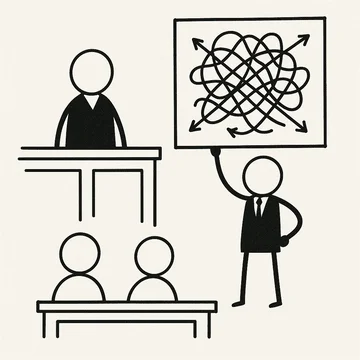
Chief Judge Connolly issued an opinion today addressing whether a claim to a COVID "vaccine" can extend to something that is not a "vaccine," and ultimately calling for the Federal Circuit to address its inconsistent precedent on construction of patent claim preambles.
The claims at issue claimed "[a] vaccine comprising . . ." a certain formulation. They agreed on what a vaccine is, but disagreed as to whether that term in the preamble to the claims should be limiting:
What the parties dispute is whether the term "vaccine" is "limiting" in claims 27 and 28. "Limiting" is patent-speak for "is an element of the claim." . . . Notwithstanding the fact that claim 27 explicitly states that "[w]hat is claimed is . . . a vaccine" and claim 28 explicitly states that "what is claimed is . . . the vaccine of claim 27," Alnylam says in its briefing that "[n]othing about [claims 27 and 28] suggests that the term 'vaccine' is meant to be a limitation." D.I. 184 at 64. Its counsel steadfastly and without any hint of irony maintained this position at oral argument: [THE COURT: So you want me to read a claim which literally says that it's claiming a vaccine, and you're telling me [that] what is accused of infringing it doesn't have to be a vaccine; right? That's your position? [COUNSEL]: That's absolutely right, Your Honor.] To be clear, I do not fault Alnylam's counsel for making this argument, even though it made me think at the time that I was in a nonsensical wonderland. See ALICE IN WONDERLAND (Walt Disney Productions 1951) (Alice saying, "If l had a world of my own, everything would be nonsense. Nothing would be what it is, because everything would be what it isn't. And contrary wise, what it is, it wouldn't be. And what it wouldn't be, it would. You see?").
Alnylam Pharm., Inc. v. Pfizer, Inc., C.A. No. 22-236-CFC, at 5-6 (D. Del. Aug. 9, 2024).
The Court noted that the defendants did not disagree with the fundamental premise:
Defendants accepted the fundamental premise of Alnylam's argument-namely, that a patent does not necessarily claim what it claims if what it claims is set forth in the claim's introductory words (i.e., the claim's preamble).
Id. The Court pointed out that this ultimately stems from the state of Federal Circuit precedent on this issue:
[I]n fairness to both sides' counsel, the real culprit here is a long line of binding Federal Circuit case law that has endorsed the Mad Hatter logic of that premise. The Federal Circuit has expressly held on numerous occasions that "[g]enerally, the preamble [of a claim] does not limit the claim[]." . . . And it has expressly held on numerous occasions that "[p]reamble language that merely states the purpose or intended use of an invention is generally not treated as limiting the scope of the claim." . . . In [one opinion], the court went so far as to refer to this latter general rule as "the presumption against reading a statement of purpose in the preamble as a claim limitation." 599 F.3d at 1294-95 (emphasis added). . . . The Federal Circuit, however, has also repeatedly held that "[t]he preamble limits the claimed invention if it is 'necessary to give life, meaning, and vitality to the claim.'"
Id. at 7-8.
The Court pointed out a big, irresolvable contradiction in Federal Circuit precedent:
And as I, for one, do not understand how the purpose or intended use of a claimed invention would not give meaning or vitality to that invention, the parties' dispute before me presents a conundrum. The purpose or intended use of something is the very reason for which that something is made or done. What could say more about the life, meaning, and vitality of a claimed invention than the claimed purpose or intended use of the invention?
I am unable to resolve in an intellectually honest way the conundrum before me. It is undisputed that the term "vaccine" is found in the preamble of independent claim 27, from which claim 28 depends. . . . It is undisputed that "vaccine" describes the intended use of the claimed invention. . . . And I do not think it can be reasonably disputed that the term "vaccine" gives life, meaning, and vitality to the claims. Indeed, "[w]hat is claimed" first and foremost in the claims-literally-is a "vaccine."
Id. at 8-9.
The Court ultimately construed "vaccine" as limiting, considering the basic credibility of the Court in the eyes of the jurors:
In the end, I will construe the term "vaccine" as a limitation in the asserted claims because that construction comports with common sense, the very notion of "a claim," and the fundamental canon that a claim should be construed to give effect to all its terms. This construction will also preserve the credibility of the Court, the law, and the patent system in the eyes of the jury that will ultimately decide the outcome of this case. . . . I think it fair to say that rational jurors would find it confusing, question my competency, and perhaps even laugh out loud were I to instruct them that claims 27 and 28 do not claim what they explicitly claim and that to establish infringement of the claims Alnylam need not prove that the accused products are vaccines.
Id. at 10.
Chief Judge Connolly also called on the Federal Circuit to reconcile its precedent this area:
I conclude with the observation that this case well illustrates the need for the Federal Circuit to jettison its rulings that treat language in the preamble of a patent claim as not limiting the scope of the claim. . . . If this case is appealed, I hope the Federal Circuit will view it as an opportunity to clarify its jurisprudence in this area. All the words of a patent claim should matter. The purpose and intended use (and meaning and vitality) of a patent claim as well as common sense call for a simple rule of law: A claim claims what it claims, nothing more and nothing less.
Id. at 12.
Some Thoughts
The existing rule seems based on the idea that you'd read the claims without the specification, so patentees need to add context for what they are talking about without that context limiting the claims in any way.
But that literally can't happen. A "person of skill in the art" is a legal construction who always reads the claims in light of the specification.
And in practice, the rule can sometimes seem to mean that the language in the preamble—which is part of the claim—almost counts for less than the rest of the specification.
Of course, changing the rule now will result in a lot of patents with narrowed claims. So it will be interesting to see if the Federal Circuit takes this up.
If you enjoyed this post, consider subscribing to receive free e-mail updates about new posts.






